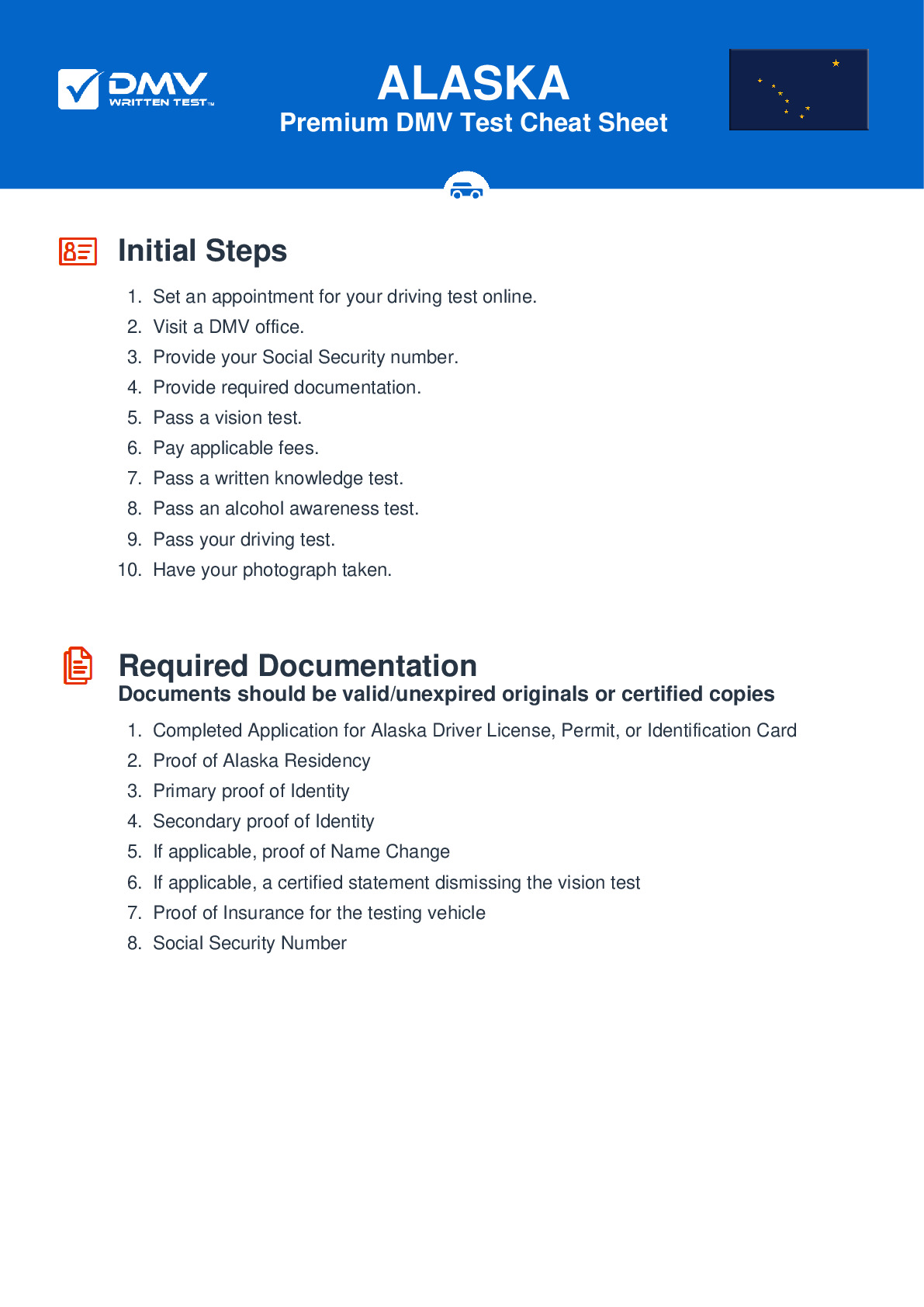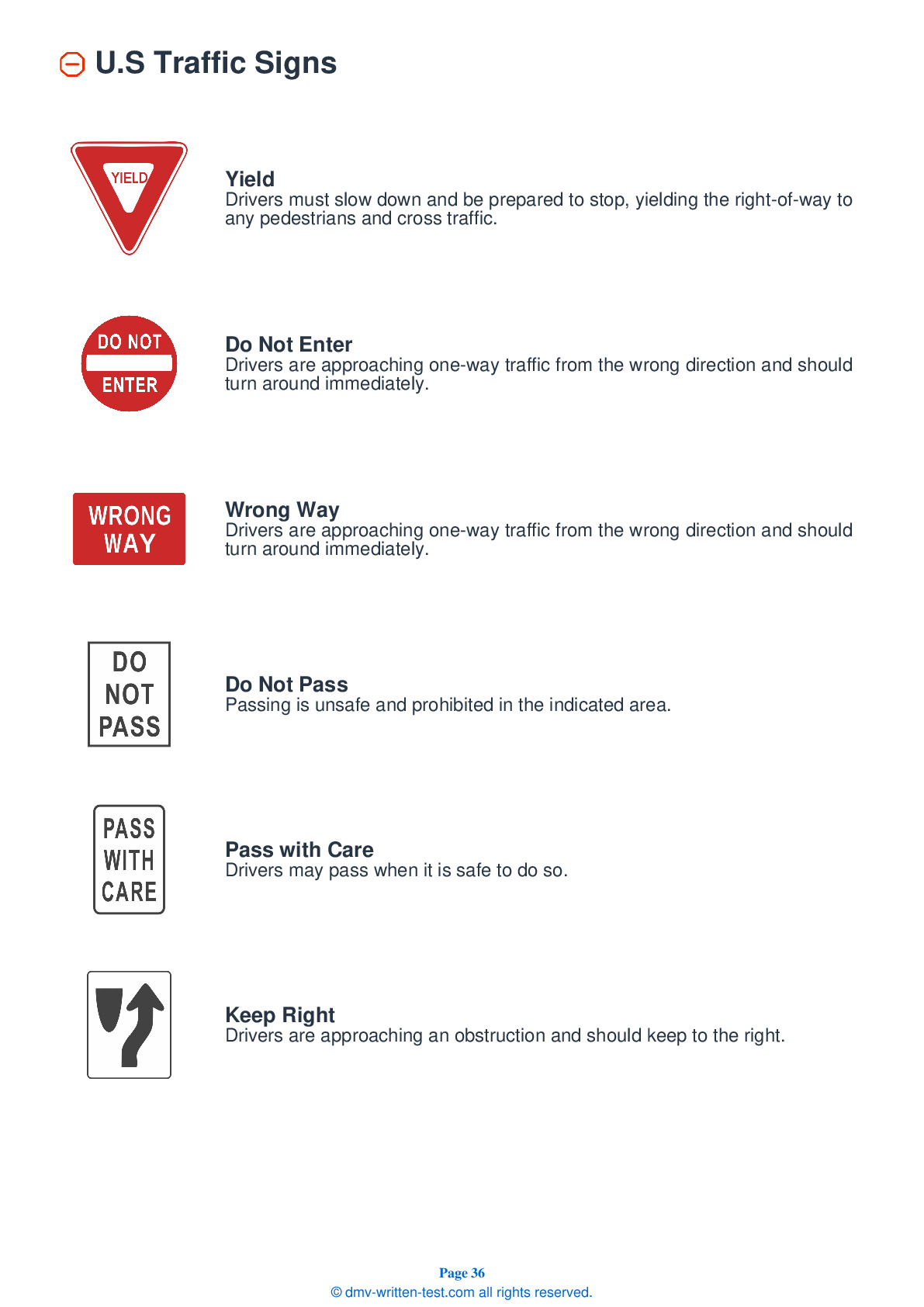2025 Alaska Permit Test 5
The following questions are from real DMV written tests. These are some of the actual permit questions you will face in Alaska. Each permit practice test question has three answer choices. Select one answer for each question and select "grade this section." You can find this button at the bottom of the drivers license quiz. For a complete list of questions and answers for Alaska please visit https://cheat-sheets.dmv-written-test.com/en/alaska/car.
Number of Tests
Number of Question
Passing Score
7. Double solid yellow lines painted down the middle of the road mean:
Explanation
Double solid yellow lines in the center of the road mean that passing is not allowed from either direction. You may not cross the lines unless you are making a left turn or passing pedestrians, bicyclists, and riders of scooters or skateboards when the opposite lane is clear and you can pass safely.
8. At a light rail intersection, always:
Explanation
You should never drive around lowered crossing gates. Always look both ways before turning across train tracks and always obey signs and traffic signals. Trains share the road with motor vehicles and bicyclists.
9. Increase your following distance when:
Explanation
You should increase your following distance when you are behind a large vehicle that blocks your vision, when driving in bad weather or heavy traffic, when exiting an expressway, when behind a motorcycle or bicycle, and if someone is tailgating you.
10. Another driver is trying to pass your car. You should:
Explanation
Keep right when another driver begins to pass you on the left. Check for oncoming traffic and adjust your speed to let the passing vehicle move back into the right lane as easily as possible.
11. You are approaching a railroad crossing that has no visible gates or flashing lights, but has a standard crossbuck. You should:
Explanation
You must approach all railroad crossings with extreme caution and cross only when you know that no train is coming from either direction. If there is a flagger at a crossing, you must obey all of their instructions.
12. Distracted drivers are at a greater risk of a crash when they are using which of the following?
Explanation
Using a cell phone (including a hands-free phone) or any kind of audio device (including a radio or CD player) can be a dangerous distraction and contributes to the risk of a crash.
13. You want to back out of your driveway. You see children playing nearby. Before you start to move your car, you should:
Explanation




